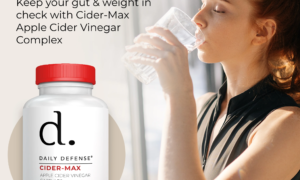
How can you maximize the benefits of foods high in Lycopene? You can get more lycopene from tomatoes that are cooked or processed. Add fats, like olive oil, when cooking tomato to help with absorption.
Lycopene, A Carotenoid, Has Many Benefits.
Lycopene is a carotenoid found in tomatoes, pink grapefruit and other foods. It helps to prevent cardiovascular disease. Lycopene levels that are high reduce the risk for heart disease and stroke. Recent research indicates that eating two portions of tomato sauce, or pizza per day, can help prevent heart disease and stroke. Tomatoes and pink grapefruit also help to protect the skin from UV damage.
Lycopene can be absorbed by consuming tomato sauce or tomato-based juice. Tomatoes have 22.4 mg of Lycopene in each serving. Guava has 18.4 mg. Avocados contain a lot of lycopene.
There are other sources of lycopene in your diet, including red fruits. Tomatoes and pink grapefruit have high concentrations of lycopene, which contributes to their bright color. This carotenoid has many health benefits, including protecting against cancer and preventing cardiovascular disease. Lycopene is a natural pigment in many foods, including tomatoes and ketchup. If you have any personal issues so you can use for the treatment of your personal issue.
Lycopene can help you prevent cancer and lower your prostate disease risk by 10 to 20%. A high level of lycopene has been associated with a reduced risk of prostate cancer among men. In another study, however, a link was found between an increased tomato consumption and a reduced risk of prostate cancer in men. The association is less strong but still significant.
Reduces Prostate Cancer
Lycopene is found in tomatoes and pink grapefruit. Consuming grapefruits and tomato in moderation is beneficial to your health. It can help reduce your risk of stroke and heart disease. Both guavas and pink grapefruits are high in vitamin C and fiber. However, tomatoes, which are rich in Lycopene are not recommended for consumption.
Lycopene is linked to a reduced risk of heart disease and cancer. Eating foods high in this antioxidant helps prevent many diseases. Lycopene is found in tomatoes, apricots pink grapefruit, watermelon papaya guava and pomegranate. A quart of green tea can help improve prostate health. You can replenish fluids with it after a strenuous workout.
Although limited human studies have been conducted, preliminary evidence suggests that Lycopene found in tomatoes and the pink grapefruit may slow or prevent the growth of kidney cancer cells. A 23-year study involving 46,000 men also found a link between lycopene, prostate cancer and the consumption of tomatoes. Men who consumed two portions of tomato sauce rich in lycopene per week had a 30% lower risk of developing prostate cancer than those who only ate one portion per month. A recent review of 26 different studies revealed mixed results.
This Product Protects Skin From Cancer
Tomatoes are a great source of lycopene. They are low in fat, mostly water, and packed with vitamins A and C, as well as fibers. Tomatoes also contain lycopene, a carotenoid pigment that gives tomatoes their deep red color. Lycopene is also found in a variety of foods, but it is most concentrated in tomatoes. Organic tomatoes have three times the lycopene content of conventional ketchup. Other nutrients that tomatoes contain include vitamin A and C, dietary fiber, and potassium.
Vidalista 20 is used for your impotence treatment.
Tomato paste is not a substitute for sunscreen but it offers a level of protection that is similar to SPF 1. Lycopene boosts production of procollagen which helps reverse the aging process. It has been proven that eating 14 milligrams lycopene per day can increase fertility in healthy young men. These benefits are based primarily on animal studies, and more human trials will be needed to confirm them.
Although tomatoes and pink grapefruits are considered to be the healthiest fruits, other red fruits and veggies are also good sources of the antioxidant lycopene. Guava, which is rich in lycopene and other vitamins and minerals and is sometimes referred to as superfruit, is also a good source of lycopene. In temperate climates, guavas can be grown indoors and eaten fresh.
Lycopene Is A Powerful Antioxidant That Protects The Skin
It is important for DNA maintenance and structure, and improves cell communication. Lycopene inhibits enzymes responsible for collagen breakdown. Lycopene is found in tomatoes, pink grapefruit and other foods. Lycopene has many benefits for the skin.
Diets rich in lycopene may reduce the risk of sunburn and increase sensitivity to ultraviolet rays. A-values can be reduced by as much as 32 percent when eating tomato paste. Regular consumption of tomato paste rich in lycopene can help protect your skin against the sun. Lycopene reduces inflammation, which can protect the skin from sun damage. This phytonutrient is not a substitute for sunscreen.
Lycopene’s skin benefits are well-known. It has been linked to a reduced risk of prostate carcinoma. It protects your heart and helps prevent oxidative damage. They are good sources of lycopene, even though tomato and pink grapefruit do not cure diseases. The red pigment is a powerful antioxidant and has many biological effects. It is the primary source of lycopene for western diets.
Lycopene, a plant pigment found in high concentrations on red and pink fruits, is a natural pigment. Also, it helps reduce blood pressure. It has many other benefits including skin protection. Although there isn’t an official daily recommended intake of lycopene in the United States, the average is around 2 milligrams or half a cup cherry tomatoes. These amounts are considered safe for most people.
This Product Protects Against Prostate Cancer
It is a powerful antioxidant and has a great deal of benefits for the body. Studies have shown that foods rich in lycopene can lower your risk for cancer and heart disease. Cooked tomato sauce is a great addition to any diet, as it increases the absorption of carotenoids that are good for your health. Beta-carotene, another form of carotenoid Vitamin A with anti-cancer qualities, is a form of beta-carotene. Green tea consumption has been linked to a reduced risk of prostate carcinoma in men.
Red fruits and vegetables contain a lot of lycopene. However, other foods can provide the same nutrients. One example of this is tomato sauce which contains 34mg of lycopene. About 20 mg of Lycopene is found in tomato juice and ketchup. Add a few tablespoons to your meal for an extra boost.
You can absorb lycopene more easily if you consume foods that are high in lycopene. Try eating roasted tomato with chopped basil and garlic to get the maximum benefit of lycopene. Lycopene can also be absorbed well with fats, so use tomato sauce or olive oil to prepare your dish. To increase the absorption rate of lycopene, add feta cheese into tomato salad.
Lycopene Reduces The Risk Of Skin Cancer
Lycopene is found in many foods including tomatoes and pink grapefruit. Lycopene, a pigment from plants, is responsible for the red color of many foods. It can also be beneficial to your health, as it prevents free radicals from damaging cells. Lycopene belongs to the carotenoid group of antioxidants.
Note that the lycopene found in tomatoes and pink grapefruits does not replace sunscreen. However, it can provide a level of protection comparable to SPF1.3. Lycopene can reverse aging by increasing the production of procollagen. It has been proven that consuming 14 mg of lycopene per day can improve fertility among healthy young men.
Lycopene-rich foods reduce the risk of cardiovascular disease and other diseases. High cholesterol can cause fatty deposits to form in blood vessels and lead to heart attacks or strokes. Eating tomatoes and pink grapefruit regularly will lower your cholesterol and protect you from cardiovascular disease. Lycopene has also been linked to skin cancer prevention. Studies show that tomato paste and tomato fruit juice can help reduce UV skin damage.






